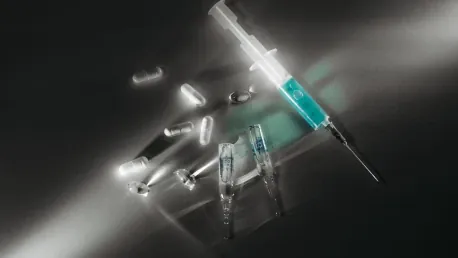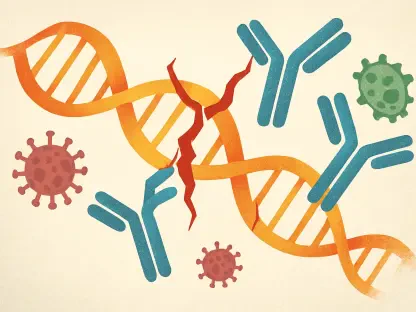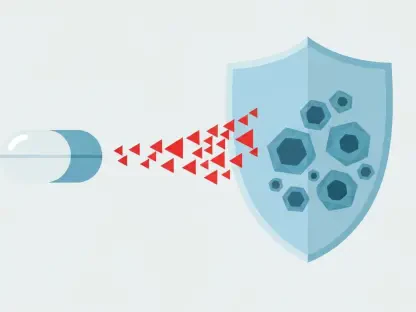The recent discovery by researchers at the University of California San Diego (UCSD) has shed light on why previous vaccines against Staphylococcus aureus (S. aureus) have failed in human trials despite success in mouse models. This breakthrough could pave the way for effective vaccines against this dangerous pathogen, which is responsible for a significant number of infections and deaths worldwide.
Understanding the Challenge
The Public Health Threat of S. aureus
Staphylococcus aureus is a major public health concern due to its ability to cause a range of infections, from minor skin conditions to life-threatening diseases like sepsis and toxic shock syndrome. The rise of methicillin-resistant Staphylococcus aureus (MRSA) has exacerbated the problem, making it more difficult to treat infections with standard antibiotics. In 2019, S. aureus was linked to over one million deaths globally, highlighting the urgent need for an effective vaccine.
Despite the severity of the threat posed by S. aureus, approximately 30 clinical trials for a vaccine have failed to produce a viable solution for human use. Researchers at UCSD have identified key factors that have contributed to these failures, offering insights that could lead to the development of successful vaccines in the future. The widespread prevalence of this bacterium and its resistance to multiple drugs demand innovative and effective strategies to protect public health and reduce high morbidity and mortality rates.
Previous Vaccine Failures
Experiments in mouse models have shown promising results for S. aureus vaccines, yet these successes have not translated to human populations. The reasons behind these failures have remained elusive until the UCSD research team’s recent investigation. Historically, most vaccine formulations could not activate the human immune system effectively, rendering them ineffective against S. aureus. Some have speculated that differences in immune responses between species could be accountable for these disparities, leading researchers to further investigate the intricacies of human immune reactions.
UCSD researchers have uncovered crucial information about the mechanisms that disable antibody function in humans. These insights provide a clearer understanding of the challenges involved in developing effective vaccines for S. aureus. By pinpointing the factors that undermine vaccine efficacy, the research team hopes to overcome the obstacles that have stymied previous efforts and pave the way for new, successful vaccination strategies. Future vaccine development could benefit immensely from these revelations.
Core Findings from UCSD Research
The Role of Interleukin-10 (IL-10)
The UCSD team discovered that S. aureus triggers high levels of interleukin-10 (IL-10) in B cells, which inactivates antibodies and prevents them from effectively targeting the pathogen. This finding, published in the Journal of Clinical Investigation (JCI) on December 16, 2024, explains why previous vaccines have not worked in humans. IL-10, an anti-inflammatory cytokine, typically serves to downregulate immune responses to avoid excessive inflammation, but in the case of S. aureus, it inadvertently hinders the body’s defense mechanisms.
This overabundance of IL-10 produced by B cells upon encountering S. aureus induces the addition of a sugar called sialic acid to the Fc region of antibodies. This modification neutralizes the antibodies’ ability to fight S. aureus effectively. By understanding this interference, researchers can explore ways to mitigate the impact of IL-10 during vaccination, focusing on refining vaccine compositions to avoid the IL-10 related inefficacy observed in earlier trials. This breakthrough represents a crucial step towards developing a successful S. aureus vaccine.
Impact on Helper T Cells
In a parallel study published in Nature Communications, researchers found that elevated IL-10 levels also impair the function of helper T cells, specifically their ability to produce IL-17A, a cytokine crucial for fighting S. aureus. This dual impact on both B cells and T cells has been a significant barrier to developing an effective vaccine. Helper T cells, or CD4+ T lymphocytes, play a critical role in orchestrating immune responses and ensuring effective pathogen clearance through various cytokine production.
Blocking IL-10 or adding an immune-response enhancer, such as CAF01, restored IL-17A levels, making previously ineffective vaccines successful in mice that had been exposed to the pathogen. This approach highlighted the necessity of targeted interventions to interrupt the detrimental influence of IL-10, thereby promoting robust immune responses. These findings underscore the importance of a comprehensive understanding of cytokine interactions and their implications for vaccine efficacy.
Historical Interaction with Humans
Long-term Coexistence
George Liu, M.D., Ph.D., chief of pediatric infectious diseases at UCSD and Rady Children’s Hospital-San Diego, explained that S. aureus has coexisted with humans for a long time. Its presence in the nose and gut has allowed it to develop sophisticated strategies to evade the immune system, including inducing the production of modified, ineffective antibodies. This long-term coexistence has resulted in the pathogen becoming adept at manipulating host immune responses to ensure its survival.
The bacterium’s ability to exploit immune regulatory mechanisms has posed considerable challenges for vaccine development. S. aureus has evolved to dampen the immune response effectively, thereby persisting within the host and avoiding elimination. These evolutionary adaptations have made it difficult for conventional vaccines to confer lasting immunity, emphasizing the need for innovative approaches that can outmaneuver the pathogen’s tactics. Understanding these historical interactions provides valuable context for addressing contemporary immunization challenges.
Childhood Colonization
S. aureus often colonizes the nasal passages of children, tricking their immune systems into producing antibodies that are unable to combat the pathogen effectively. This early exposure complicates efforts to develop vaccines that can overcome the immune system’s learned response to the bacteria. During childhood, repeated exposure to S. aureus may condition the immune system to generate modified antibodies that are insufficient for fighting off subsequent infections.
This phenomenon presents a significant hurdle in creating vaccines that can successfully engage the immune system. The immune system’s “memory” of its prior, ineffective antibody responses must be circumvented or reprogrammed to generate potent, effective antibodies capable of neutralizing the pathogen. Addressing this issue requires innovative strategies that focus on breaking the cycle of ineffective immune responses and facilitating robust protection against S. aureus infections.
Evidence from Research
Reactivating Ineffective Antibodies
In earlier research led by Chih-Ming Tsai, Ph.D., it was demonstrated that the ineffective antibodies produced in response to S. aureus could be reactivated in future infections. This reactivation has contributed to the failure of vaccines in human trials, as the immune system’s response to the pathogen is already compromised. The study highlighted the complexity of the immune response and the importance of targeting specific mechanisms to ensure vaccine efficacy.
When mice that had not been previously exposed to S. aureus were vaccinated, the vaccines were effective. However, introducing human S. aureus antibodies to mice before vaccination resulted in the vaccines being ineffective, mirroring the human immune response and highlighting the challenges in developing a successful vaccine. These findings emphasized the need to tailor vaccine strategies to address the specific immunological context of human exposure and antibody production.
Mouse Model Insights
The insights gained from mouse models have been instrumental in uncovering the mechanisms behind vaccine failures. Researchers found that when naive mice, unexposed to the bacteria beforehand, were vaccinated, they mounted a strong immune response against S. aureus. However, introducing human S. aureus antibodies to mice before vaccination resulted in the vaccines being ineffective, highlighting the disparity between initial efficacy results and human trial outcomes.
This mirroring of the human immune response in mouse models provided crucial evidence to refine vaccine formulations. The data underscored the necessity of developing strategies that can overcome the limitations posed by pre-existing ineffective antibodies. By modeling these interactions in animal studies, researchers gained valuable insights into how to design vaccines capable of effectively engaging the human immune system. These findings pave the way for further investigations that could lead to transformative advancements in vaccine design.
Detailed Investigations
B Cells and IL-10
Tsai and Liu’s team observed that B cells produce excess IL-10 when re-exposed to S. aureus, leading to the addition of sialic acid to the Fc regions of antibodies. This modification neutralizes the antibodies’ antimicrobial efficacy. Targeting IL-10 during immunization restored the vaccine’s effectiveness in mice, offering a potential strategy for human vaccines. This discovery sheds light on the specific regulatory pathways that hinder effective antibody responses and provides a clear direction for improving vaccine formulations.
By understanding the role of IL-10 in immune modulation, researchers can devise targeted interventions to counteract its effects. This approach may involve designing adjuvants or immunization protocols that block IL-10 production or activity, thereby ensuring that antibodies retain their functional integrity. The success of this strategy in mouse models offers promising prospects for translating these findings into human applications. The insights gained from this research could inform the development of vaccines for S. aureus and other pathogens with similar immune evasion mechanisms.
Helper T Cells and IL-17A
Helper T cells (CD4+ T lymphocytes) also produce excess IL-10 in response to S. aureus, which affects the production of IL-17A. Blocking IL-10 or adding an immune-response enhancer, CAF01, restored IL-17A levels, making previously ineffective vaccines successful in mice that had been exposed to the pathogen. This finding underscores the importance of CD4+ T cells in orchestrating effective immune responses and highlights the potential of targeting IL-10 to enhance vaccine efficacy.
IL-17A, a cytokine produced by helper T cells, plays a crucial role in mobilizing immune cells to combat bacterial infections. The impaired production of IL-17A in the presence of elevated IL-10 levels compromises the immune response against S. aureus. By restoring IL-17A levels through targeted interventions, researchers can enhance the body’s ability to fight off infections and improve vaccine outcomes. These insights provide a foundation for developing new immunization strategies that leverage the interplay between different immune cell types and cytokines to achieve robust and lasting protection.
Implications for Future Vaccines
Potential for Human Application
These discoveries could revolutionize the development of vaccines for S. aureus and other pathogens. By blocking IL-10 or enhancing IL-17A during vaccination, previously failed vaccines may become effective. This approach could also be applied to other diseases, such as Clostridioides difficile and malaria, where similar immune response mechanisms have likely caused past vaccine failures. The research conducted by UCSD represents a pivotal advancement in understanding the complex interplay of immune responses and offers promising avenues for future vaccine development.
The potential for human application of these findings is immense. Researchers can now explore novel vaccination strategies that incorporate targeted interventions to counteract the modulatory effects of IL-10. These strategies could improve the efficacy of vaccines not only for S. aureus but also for a wide range of pathogens that pose significant public health challenges. The broader implications of this research extend beyond S. aureus, highlighting the importance of cytokine targeting in vaccine design and paving the way for transformative advancements in immunization practices.
Collaborative Research and Funding
Researchers at the University of California San Diego (UCSD) recently discovered why prior vaccines against Staphylococcus aureus (S. aureus) have consistently failed in human clinical trials despite showing promising results in mouse models. This discovery is pivotal as it provides crucial insights into the differing immune responses between humans and mice, which has been a significant barrier in developing effective vaccines for this dangerous pathogen. S. aureus is responsible for serious infections and a considerable number of deaths worldwide, making this breakthrough particularly significant for public health. The newfound understanding could lead to the development of vaccines that are effective in humans, ultimately reducing the global burden of S. aureus infections. Researchers at UCSD are now optimistic that with this knowledge, they can formulate vaccines that will provide immunity in humans, unlike their predecessors. The ultimate goal is to create a robust defense against S. aureus, significantly lowering infection rates and fatalities linked to this persistent pathogen.









